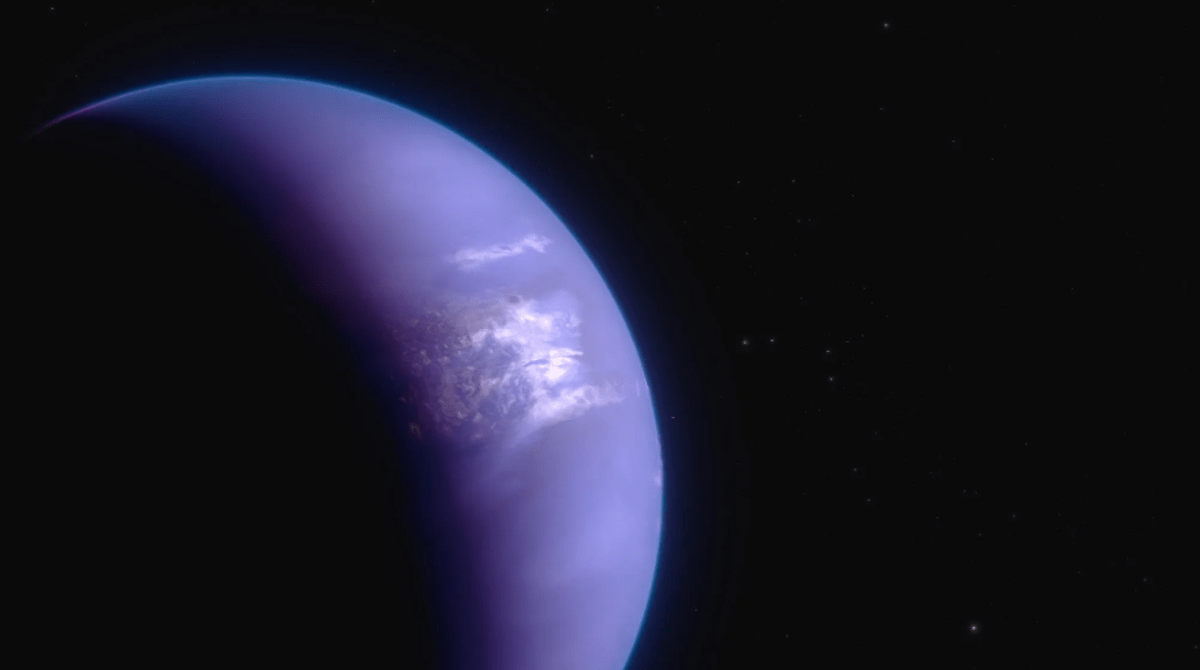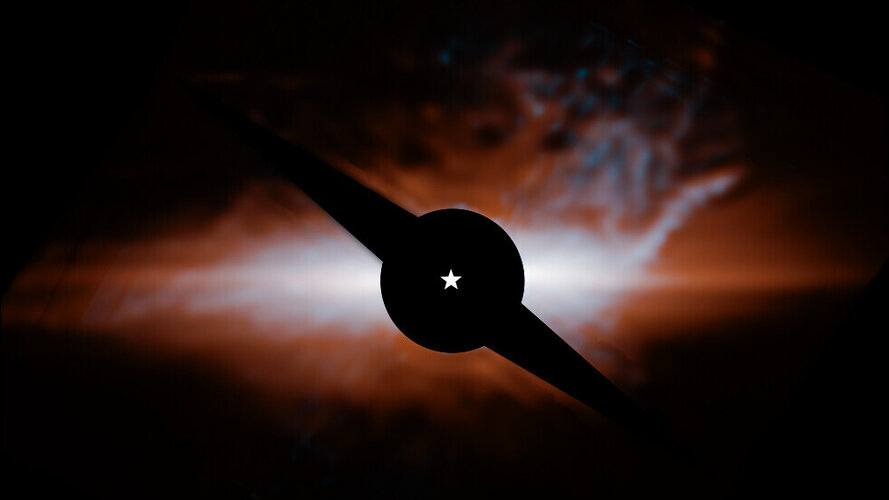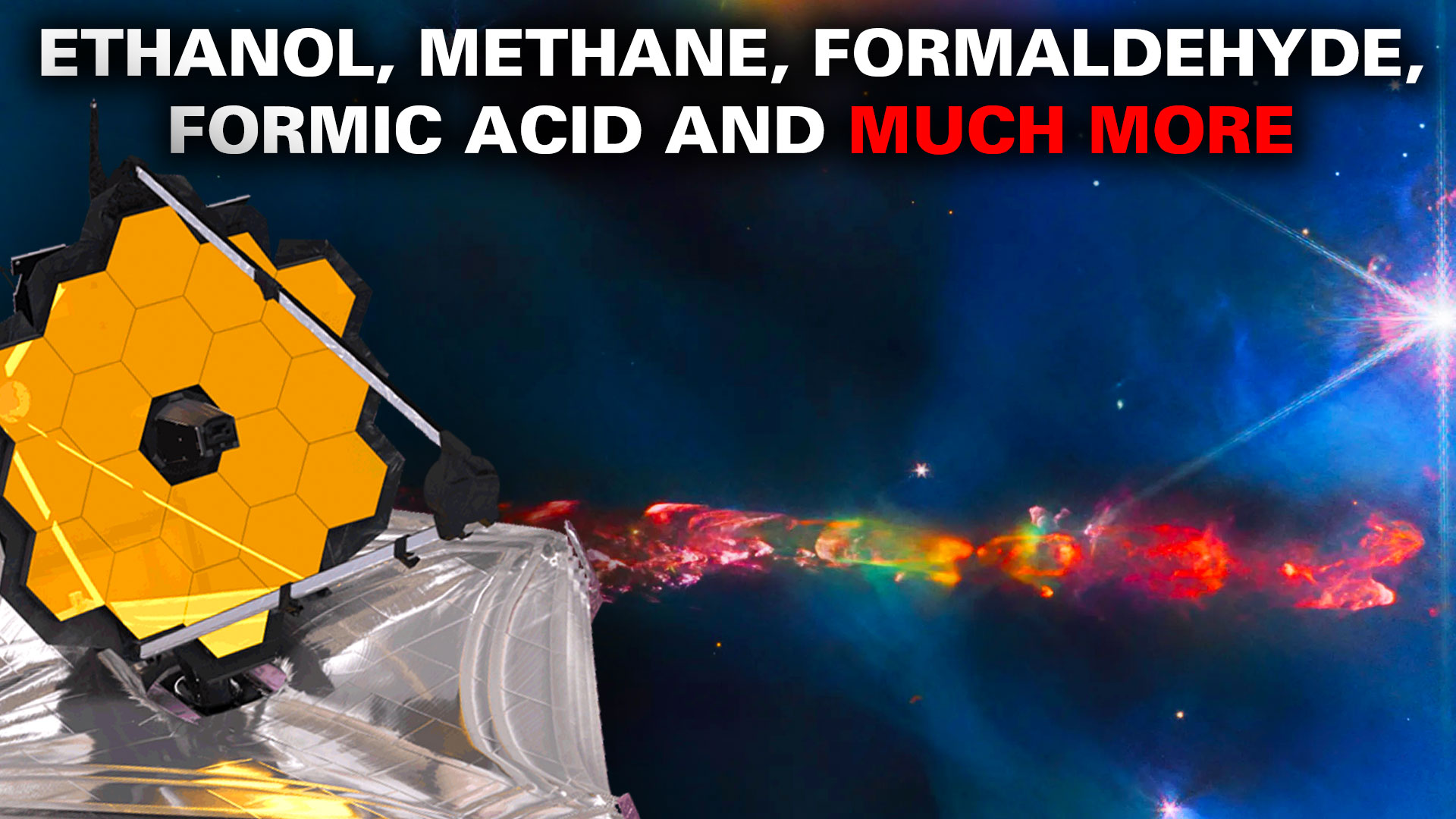To northern sky watchers, Vega is a familiar sight in the summer sky. It’s one of the brightest stars in the sky and in 2013, astronomers detected a large ring of rocky debris surrounding the planet. The prospect of planets suddenly became a real possibility so astronomers turned the James Webb Space Telescope (JWST) on the star. The hunt achieved 10 times the sensitivity of previous ground based searches but alas no planets were discovered.
Continue reading “Webb Scans Vega for Planets”The Outer Reaches of the Milky Way are Full of Stars, and the JWST is Observing Them

The Milky Way’s outer reaches are coming into view thanks to the JWST. Astronomers pointed the powerful space telescope to a region over 58,000 light-years away called the Extreme Outer Galaxy (EOG). They found star clusters exhibiting extremely high rates of star formation.
Continue reading “The Outer Reaches of the Milky Way are Full of Stars, and the JWST is Observing Them”The JWST Reveals the Nature of Dust Around an Active Galactic Nuclei

Supermassive Black Holes (SMBHs) are located in the centers of large galaxies like ours. When they’re actively feeding, they produce more light and are called active galactic nuclei (AGN). But their details are difficult to observe clearly because large clouds of gas block our view.
The JWST was built just for circumstances like these.
Continue reading “The JWST Reveals the Nature of Dust Around an Active Galactic Nuclei”Webb Directly Images a Jupiter-Like Planet

The JWST has directly imaged its first exoplanet, a temperate super Jupiter only about 12 light-years away from Earth. It could be the oldest and coldest planet ever detected.
Continue reading “Webb Directly Images a Jupiter-Like Planet”Webb Sees a Star in the Midst of Formation

Wherever the JWST looks in space, matter and energy are interacting in spectacular displays. The Webb reveals more detail in these interactions than any other telescope because it can see through dense gas and dust that cloak many objects.
In a new image, the JWST spots a young protostar only 100,000 years old.
Continue reading “Webb Sees a Star in the Midst of Formation”Something’s Always Been Off About the Crab Nebula. Webb Has Revealed Why!

The Crab Nebula has always fascinated me, albeit amazed me that it doesn’t look anything like a crab! It’s the result of a star that exploded at the end of its life back in 1054 CE, leaving behind what is known as a supernova remnant. Back then the explosion would have been visible to the naked eye, even in daytime. It was thought that the supernova that led to the cloud was from a less evolved star with a core made from oxygen, neon and magnesium. Recent studies by the James Webb Space Telescope reveals that it may actually be the core collapse of an iron rich star.
Continue reading “Something’s Always Been Off About the Crab Nebula. Webb Has Revealed Why!”Is the JWST Now an Interplanetary Meteorologist?

The JWST keeps one-upping itself. In the telescope’s latest act of outdoing itself, it examined a distant exoplanet to map its weather. The forecast?
An unending, blistering inferno driven by ceaseless supersonic winds.
Continue reading “Is the JWST Now an Interplanetary Meteorologist?”Webb Finds Hints of a Third Planet at PDS 70

The exoplanet census now stands at 5,599 confirmed discoveries in 4,163 star systems, with another 10,157 candidates awaiting confirmation. So far, the vast majority of these have been detected using indirect methods, including Transit Photometry (74.4%) and Radial Velocity measurements (19.4%). Only nineteen (or 1.2%) were detected via Direct Imaging, a method where light emitted or reflected from an exoplanet’s atmosphere or surface is used to detect and characterize it. Thanks to the latest generation of high-contrast and high-angular resolution instruments, this is starting to change.
This includes the James Webb Space Telescope and its sophisticated mirrors and advanced infrared imaging suite. Using data obtained by Webb‘s Near-Infrared Camera (NIRCam), astronomers within the MIRI mid-INfrared Disk Survey (MINDS) survey recently studied a very young variable star (PDS 70) about 370 light-years away with two confirmed protoplanets. After examining the system and its extended protoplanetary disk, they found evidence of a third possible protoplanet orbiting the star. These observations could help advance our understanding of planetary systems that are still in the process of formation.
Continue reading “Webb Finds Hints of a Third Planet at PDS 70”Webb Blocks the Star to See a Debris Disk Around Beta Pictoris

You think you know someone, then you see them in a slightly different way and BAM, they surprise you. I’m not talking about other people of course, I’m talking about a fabulous star that has been studied and imaged a gazillion times. Beta Pictoris has been revealed by many telescopes, even Hubble to be home to the most amazing disk. Enter James Webb Space Telescopd and WALLOP, with its increased sensitivty and instrumentation a new, exciting feature emerges.
Continue reading “Webb Blocks the Star to See a Debris Disk Around Beta Pictoris”Webb Finds Icy Complex Organic Molecules Around Protostars: Ethanol, Methane, Formaldehyde, Formic Acid and Much More

In the quest to understand how and where life might arise in the galaxy, astronomers search for its building blocks. Complex Organic Molecules (COMs) are some of those blocks, and they include things like formaldehyde and acetic acid, among many others. The JWST has found some of these COMs around young protostars. What does this tell astronomers?
Continue reading “Webb Finds Icy Complex Organic Molecules Around Protostars: Ethanol, Methane, Formaldehyde, Formic Acid and Much More”
